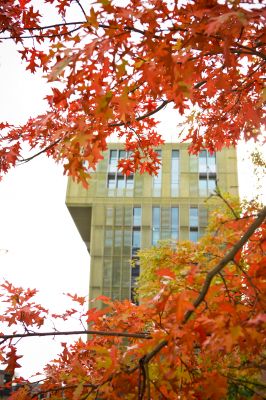
Hanze University of Applied Sciences, Groningen is the largest technical & vocational university in the northern Netherlands and is located in Groningen.
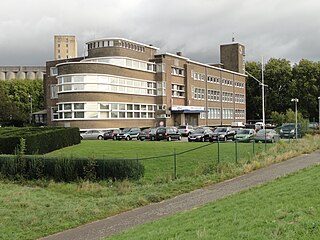
The Antwerp Maritime Academy is a university college in Belgium, located in the north of Antwerp. The academy trains future officers of the Merchant Navy and Belgian Navy. The Antwerp Maritime Academy is the only Vocational university in Belgium allowed to teach in both Vernaculars, being Dutch and French. There are two sections at the academy: Nautical science and Marine engineering. Marine engineering: results in a Bachelor's Degree in Marine Engineering after a three-year cycle. To obtain a Master's Degree in Marine engineering a second, one-year cycle is required. Nautical science: results in a Bachelor's Degree in Nautical Sciences after a three-year cycle. To obtain a Master's Degree in Nautical Sciences a second, one-year cycle is required. The Bachelor's and Master's Degree in Nautical Sciences are multidimensional: technical subjects combined with languages, economics, (maritime) medicine and (international) law. The courses do not only have to comply with regulations set by the local education authorities, they have to meet stringent international and quality-standard requirements set by the International Maritime Organization (IMO). The Antwerp Maritime Academy is, because of her specific profile, the smallest academy in Flanders with ca. 670 students.
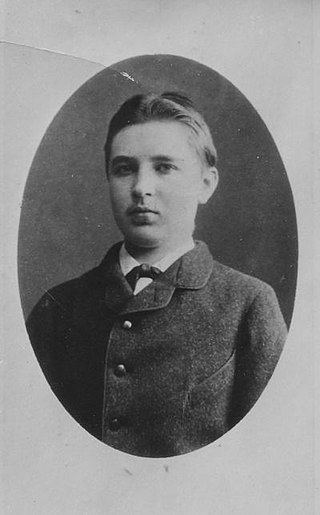
Gerrit van Houten, was a Dutch painter and artist.

Evert Musch was a Dutch painter.
Franciscus Hermanus Bach, officially Bachg, was a Dutch painter.

Johannes Jacobus (Jan) van der Vaart was an influential Dutch ceramicist from the 20th century, known as founder of the abstract-geometric ceramics in the Netherlands.

Hans de Jong was a Dutch sculptor, designer and ceramist.
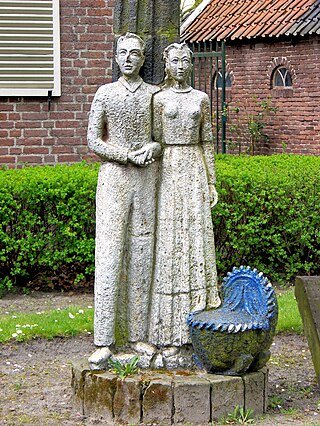
Ferdinand Anno (Anno) Smith was a Dutch artist, who worked as ceramist, painter, sculptor and art teacher.

Henk Trumpie was a Dutch ceramist and sculptor.

Gerardus Johannes (Geert) Lap was a Dutch ceramist, known for his new approach to ceramics characterized as clay minimalism.

Johan Gerard van Loon was a Dutch ceramist and textile artist.
Emmy van Deventer-Molt was a Dutch ceramist, and lecturer at the Gerrit Rietveld Academie, and the AKV St. Joost.

Otto Eerelman was a Dutch painter; best known for his depictions of dogs and horses. He was also a court painter and did several portraits of Wilhelmina, as Princess and Queen.

Johannes Hinderikus Egenberger, originally Joannes Henricus, was a Dutch painter, photographer and art educator.

Albert Jurardus van Prooijen was a Dutch painter of cityscapes, landscapes and genre scenes.
Pascal van der Graaf is a Dutch artist who lives and works in Taiwan. He is best known for his landscapes, seascapes and still-life paintings painted in a variety of techniques. His work has been exhibited nationally and internationally.
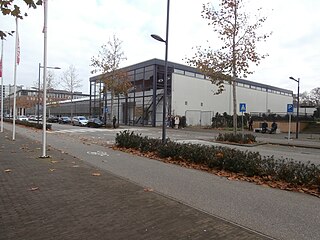
The Royal Academy of Arts and Design was an academy for art education in 's-Hertogenbosch. In 2004 it merged with the Art Academy St. Joost from Breda to become the Academy of Art and Design St. Joost located in both Breda and 's-Hertogenbosch.

Alida van Houten (1868-1960) was a Dutch painter.

Dirk de Vries Lam was a Dutch painter who specialized in cityscapes. The name De Vries, from his mother's side of the family, was added, by official permission, in 1897.
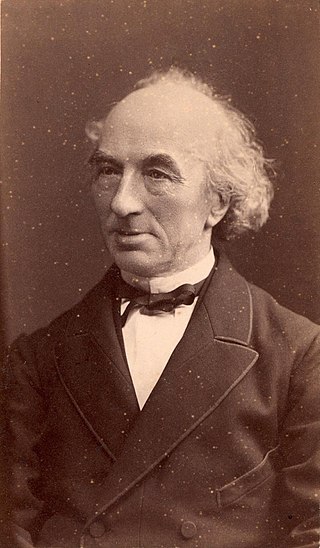
Jan Ensing, or Ensingh was a Dutch painter, graphic artist, and lithographer; primarily known for his portraits.

















